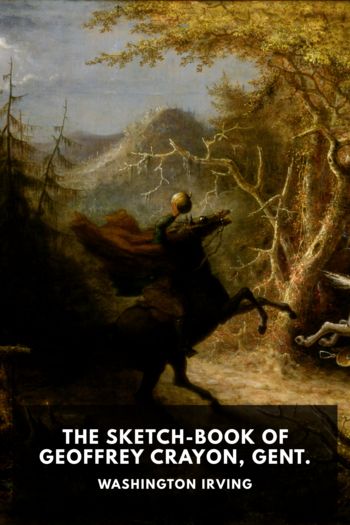Loverly:The Life and Times of My Fair Lady (Broadway Legacies), McHugh, Dominic [fantasy books to read TXT] 📗

Book online «Loverly:The Life and Times of My Fair Lady (Broadway Legacies), McHugh, Dominic [fantasy books to read TXT] 📗». Author McHugh, Dominic
The third scene is initially more familiar from both play and musical: Higgins and Pickering sit in the study listening to phonetic noises in the darkness, and the Colonel is tired of the exercise. But then Lerner introduces something new—a visit from Mrs. Higgins with Miss Clara Eynsford Hill, neither of whom ever sets foot in Higgins’s residence in the finished musical. Mrs. Higgins’s attempt to encourage Higgins to marry Clara is also an innovation, probably based on Shaw’s stage direction in act 3 of Pygmalion that Clara “considers Higgins quite eligible matrimonially.” (Indeed, in the play she goes on to flirt with him during act 3, which depicts Mrs. Higgins’s tea party; much of the scene is transferred to Ascot in My Fair Lady.)34 This gives rise to Higgins’s song “Please Don’t Marry Me.” The number signals the start of a much more conventional discussion of romance in the show, which continues with Pickering’s song about the impossibility of living without “the warmth and affection of the opposite sex” in scene 5, Freddy’s song about loving Eliza (which obviously became “On the Street Where You Live”) in scene 8, Higgins’s and Pickering’s song of praise and flattery, “Lady Liza,” in scene 9, and Eliza’s “Say a Prayer” in the final scene of the act. Originally, the latter song had a more overtly romantic lyric that referred to Eliza praying “that he’ll discover / I’m his lover / For now and evermore,” hence the song belongs in the same category (see chap. 4).
Also of importance is the description of the end of the first act: “Liza appears at the top of the stairs, dressed like a queen. … In seemingly regal serenity, she requests Higgins’ arm, and the three start off for the ball.” In this formulation, Lerner has Eliza requesting Higgins’s arm, but the published script suggests quite the reverse: “[Higgins] starts briskly for the door. At the threshold, he pauses, turns and gazes at Eliza. He turns to her and offers his arm.”35 The mere presence of this scene is also significant, because Lerner later claimed it was an invention during the New Haven tryouts to cover the cutting of the ballet, “Come to the Ball,” and “Say a Prayer.”36 Instead, it seems from this outline to have been a reinstatement of an idea that had been thought of early on.
Outline 2: Complete Early Structure (1952)
Outline 2 probably dates from roughly the same period as its predecessor; the substance of the first act is almost exactly the same in both, hence scenes 2–9 are omitted in the reproduction of Outline 2 in tables 3.2 and 3.3. Evidently, this second outline is an elaboration of Outline 1, as well as adding Lerner’s plans for act 2.37 Aside from the way in which it diverges from the final show, Outline 2 is notable largely for Lerner’s clarity regarding the derivation of the script’s different components. For instance, in act 1, scene 1, Lerner writes “From here to end of scene, same as play,” and in the final scene of the act he indicates: “This will be portion of scene that occurs in play in Act V.” Elsewhere, reference is made to the “motion picture.” So although the events depicted in act 1 of Outline 2 are largely the same as in act 1 of Outline 1, Outline 2 acts as a kind of loose map around the Pygmalion play and film that Lerner proposes as the basis for his adaptation.
Table 3.1.Outline 1, Act 1 only
Table 3.2.Outline 2, Act 1
New musical numbers are indicated here, too. In place of “I’m a Good Girl, I Am,” Outline 2 has “The Like of ’im and the Like of Me,” which presumably indicates Eliza’s view of the social distinction between her and Higgins. It is reprised in act 2 at the end of the scene of the argument between the two characters in the same position as the tearful reprise of “Just You Wait” in the published script; it is interesting that the expressive function of a reprise at this point in the show was in place early on. Also, Pickering’s act 1 “ballade” is reprised twice in the second act, signaling his more prominent function in this early version. Scene 4 seems also to be roughly in its definitive state, but scenes 5–8 are quite different because of a crucial change to the story: Doolittle’s wedding becomes a focal point. Upon discovering Eliza has fled, Higgins traces her to her father’s wedding; the gathering of the significantly “Middle Class” guests outside the church is a way of illustrating Doolittle’s social mobility; Doolittle blames Higgins for his new circumstances to his face (as in Pygmalion) rather than via Eliza (as in Fair Lady); there is no scene at Mrs. Higgins’s house (the argument takes place outside the church instead); and Eliza leaves “triumphantly” with Freddy after her argument with Higgins, rather than departing alone and reappearing at Higgins’s house in the final scene. The ending, however, seems to have been conceived as the proper conclusion for the musical all along, hinting that Lerner always saw the close of the Pygmalion movie as his preferred ending to the piece.
Like Outline 1, Outline 2 portrays romance between Higgins and





Comments (0)